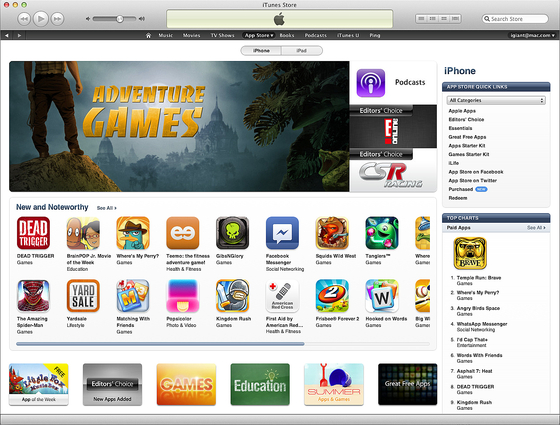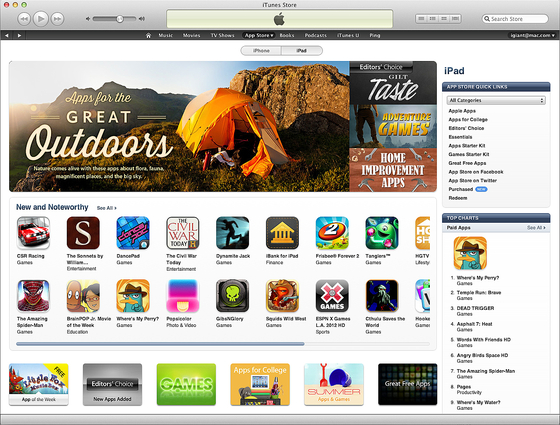I’ve been putting off this post until Popsicolor 2.0 shipped; version 1.0 was developed so quickly and minimally that it may have required a leap of faith for some users. I wanted to make sure I could pay back the feature debt I owed them by shipping a free update that lived up to the potential that inspired them to buy the first version. Popsicolor 2.0 shipped in December, 2012 and has been well received. Thank You for your support!
App Built in 7 Days Featured by Apple the Week it Launched
Popsicolor is an iOS photo app that turns photos in stylized, watercolor-inspired images. Version 1.0 was designed and developed by one person (me) in just under seven days and was featured by Apple in the “New and Noteworthy” section of the App Store the week it was launched. From the standpoint of time invested vs. pay-off, it was successful.
![]()
More importantly, it was an extremely fun and reinvigorating project—I had spent the past year finishing a major update to another app and beginning a long development cycle for another; creating Popsicolor was the break I needed as well as the perfect experiment to try to and speed up my product development cycle. I’ll share the lessons learned in a longer postmortem, to follow, but for now I’d like to share some results and stats from version 1.0’s first 28 days.
Note: Popsicolor is currently up to version 2.x. By contrast, version 2.0 took a few months to complete. It was released as a free update in December, 2012. To see what version 1.0 looked like at the time of launch, you can watch an archived screencast here.
This is the development and launch timeline:
The timeline can be broken down roughly as:
Week 1: Design, development and testing
Week 2: “Coming soon” and landing page development
Week 3: Launch prep (drafting emails, making a press kit) and launch
Week 4: Launch response (answering emails, requests for promo codes, sleeping, etc.)
.
And finally, here are some semi-random stats from June 8th, 2012 through July 5th, 2012:
.
| Days to design and develop | 7 |
| Team Size | 1 |
| Testers and Feedback-Givers (Thank You!) | 10 |
| Number of Test Flight Alpha and Beta Releases | 21 |
| Project-Specific Expenses | $97.08 |
| App Price | US 99¢ (Tier 1) |
| Best Top Paid Apps Rank (US → iPhone) | #59 |
| Best Top Paid Apps Rank (US → iPad) | #60 |
| Best Top Paid Apps Rank (US → Photography → iPhone) | #5 |
| Best Top Paid Apps Rank (US → Photography → iPad) | #3 |
| Paid Downloads in First 11 Days | 20,195 |
| Max Downloads in One Day | 2,995 |
| Mean App Store User Rating | ✭✭✭✭✩ |
| Number of Reviews | 220 |
| Number of Times Gifted | 43 |
| Number of Refunds | 5 |
| Number of Updates | 1 |
| Version Number | 1.0.1 |
I hope this information is interesting! Feel free to send me your thoughts, leave a comment/question below, or just say Hi on Twitter: @tinrocket.
There is additional discussion of this post on Hacker News.




Hey those are some impressive numbers! Do you have any tips on App Store SEO?
I don’t know anything about App Store SEO. I put all my effort into the app and how people will approach it: icon, name, screenshots, etc.
A seductive icon that catches people’s eye is worth all the time and effort you can afford. For Popsicolor, I took a screenshot of the current App Store homepage, picked out a spot on the top row, and tested how the icon looked there as I worked on it.